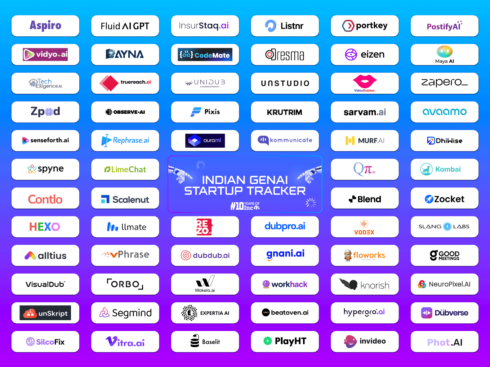
SUMMARY
It is now more than ever when enterprises need to place their trust on an AI solution
The ethical implications may be considered questionable but it is a necessary evil
R&D for any AI project is often cost extensive
The Covid-19 pandemic has made RoI on AI redundant. The worldwide adoption of AI has busted the myth that AI requires intensive investment on infrastructure, process changes, and manpower. It has been seen that AI-powered solutions have become the determining factor of an enterprise’s survival. Enterprises have realigned their priorities to survive the pandemic. Several start-ups sprang into action and created AI-powered solutions that helped every sector.
In manufacturing sector, for instance, in order to achieve social distancing, only 50-75% of employees are allowed to come to factories. These employees need to follow the rules of social-distancing and mask compliance. Keeping the assembly line running, while ensuring health safety among the workforce, is an extra responsibility that enterprises are dealing with.
The fear of manufacturing premises getting sealed in case multiple positive cases are detected among employees, also looms large. Monitoring social distancing and mask compliance, at all time is not humanly possible even with CCTV surveillance. The possibility of human error and subsequent blame game in a workplace only adds to the pre-existing stress.
It is now more than ever when enterprises need to place their trust on an AI solution. Computer vision, for one, is an AI solution that analyses live CCTV camera feeds and raises alerts real-time. It can plug into the pre-existing CCTV infrastructure and help employers monitor face mask alongside social distancing non-compliance, all in real-time. Unlike humans, technology is binary. If a person is not wearing a face-mask, whether they be the CEO or the intern, the system will raise an alarm.
This helps keep the manufacturing premises safe as it reduces the spread of the virus as well as boosts the morale of the workforce. Enterprises can choose to display the percentage of face-mask or social distancing compliance followed on their website or send messages to employees with data analytics at the end of their shift. Computer Vision solutions make managing crowds in places like canteens easy, and creates shift-rotations to ensure maximum productivity. AI also helps the enterprise stay afloat, create safe premises for work and also help boost employee morale.
What you can measure, you can manage. Facts and figures emerging from industries that have invested on AI from a B2B standpoint, particularly in regard to tangible ROI, clearly show a trend. For many industries, this RoI is subjective. For example, HSE solutions use AI that helps in preventing accidents, disability and deaths. Lives are saved because AI-based solution are monitoring forklift path and raise a real-time alert when a pedestrian is in its way.
Identifying near- miss, monitoring PPE, fire and thermal compliance are just some facets where AI has been able to provide a high level of accuracy by preventing accidents. The tangible part varies from actionable insights which lead to a robust sales channel for a product company by simply identifying habit patterns of people in retail and, in turn, enhancing the shopping experience. The pandemic has caused an unprecedented surge in online shopping, providing companies with data to analyse shopper’s choices. The use of AI, in this case, will lead to a more accurate profiling of people and targeted advertising.
The ethical implications may be considered questionable but it is a necessary evil. The digital footprint has always existed, the AI recognizes uses it to understand patterns and provide insights that are, otherwise, invisible to the human counterpart. AI has galvanized various facets of a gamut of industries like healthcare, retail, education, supply chain and manufacturing. Be it process efficiencies, safety, wastage, market prediction or resource planning, AI has a strong footing in all these functions.
While the actual statistics of ROI for enterprises that adopted AI in 2020 are yet to emerge, a 2019 survey by Gartner gives a realistic picture. About 37% of organizations have implemented AI in some form or the other across 89 countries. This equates to an approx. 270% increase over the last four years. It is predicted that by 2021, 80% of emerging technologies will have some form of AI foundation.
The challenges are highlighted in a report by AI Stats News. It claims that about 65% of companies have not seen business gains from their AI investments. It has also been recognized that R&D in this domain is yet to reach its full potential. This discrepancy can be attributed to a number of elements that factor in different stages of the AI deployment process, coupled with acute talent shortage and time management issues.
The ROI Race
The emergency adoption of AI would definitely bring its share of troubles, such as overlooking important parameters like protection of employee privacy. However, enterprises should not treat AI as a single, homogenous entity. Identification of the right implementation is critical to attaining tangible ROI for every new-age technology in the business ecosystem around the globe. Each industry and organization is different and the key is to identify the right fit for their requirements.
R&D for any AI project is often cost extensive. A large amount of data is required to train the AI algorithm. One major hurdle that the organisations face is not having the right dataset to train their AI. Incorrect labels or missing values eventually result in discrepancies in the outcome.
According to the MIT Sloan Management Review and BCG survey, around 40% of the organizations making “significant investments” in AI do not report business gains from AI. It is critical to be informed about what AI can and cannot do. It is still difficult to provide a human-like personalised experience with NLP based chatbots, as AI is unable to mimic human emotion and empathy. Transparency is crucial; if people know that they are talking to a chatbot, they would not expect it to have human emotions and will be more factual in their conversation.
A lot of banks have already started a form of mixed chat experience wherein a chatbot first takes in the details like name, problem faced and other details before bringing in a person to take the conversation forward. This helps save the organisation’s time and money, as the no. of employees lessen. The more the data permeates the system, the better equipped NLP bots become at handling more complex questions.
Business leaders that have realistic expectations from AI, fare better in the long run. The basic protocols that help them understand and utilize AI better are:
- Organisations must engage in strategic data acquisition
- The need for unified data warehouses
- Pervasive automation
- Acceptance and awareness of new roles in the field like – data scientist, data analyst, ML Engineer
- Division of labor based on subject-matter expertise for new roles
Three Pillars To Successful AI Deployment
Domain experts like Andrew Ng, insist that the three pillars of intelligence for successful AI deployment in any organization, are business, technological and ethical diligence. The sales and marketing team, with intuition and experience, should give equal weight to data-driven analytics when making business decisions. Ethics, in terms of data privacy, confidentiality and educating the end-users builds the foundation of any AI-driven organisation.
When used ethically, AI has the potential to democratize the world. It is important to build cross-functional teams where the domain knowledge overlaps. This helps experts strategize better on the basis of a holistic perspective. It is a long-term asset that helps organizations plan and prioritise KPIs in a more data-driven way.
To build strong traction and effective ROI, organizations must set pragmatic goals when it comes to adopting AI in the company’s operations. AI is an emerging field and currently, it is evident that due to the lack of understanding the AI usage, many organizations are not aware of how to leverage it properly. Organizations need to adopt these small yet effective protocols in order to channel success. These are:
- Prioritise AI pilot projects
- Build an in-house AI team
- Provide basic AI training to cross-functional teams in the organisation
- Develop internal and external communication: Align your stakeholders on how your company is navigating and strategising on the integration of AI in operations.
There are common misconceptions surrounding AI investments. It is claimed that AI requires intensive investment on infrastructure, process changes and manpower. Similarly, one often hears that it is usually not before several years that organizations see a ROI. This couldn’t be further from the truth. Modern AI engines can run on-premise using accelerators like GPU from NVIDIA to access the data at site.
This could be visual data from CCTV footages, operational data from machines and their controllers. Modern AI engines are also fast, supple and extremely lightweight. Complex AI pipelines around tracking, detection and classification on 8 camera streams at 30 FPS, can run on an edge device that costs under USD 100 and can be deployed in a few weeks.
It is becoming a lot simpler for organizations to define and build pipelines tailored to their needs. The insight that is available from AI enables an organization to cut costs, ensure safety and improve quality all leading to tangible ROI.
Conclusion
Economies across the world are tanking, clouds of recession are looming large. AI provides a silver lining in these dark times. The pandemic created powerful artificial intelligence ecosystems across the world. It has helped logistics, supply chain distribution, and sales, allowing organizations to perform as close to optimum as possible post lockdown. Enterprises have started functioning and several lives are saved. For every rupee invested in an AI system that’s right for an organization, it has helped save much more.
In time the real statistics will emerge. The new world will also require different parameters for judging everything, including RoI for the implementation of an AI solution. As of now, the spotlight shines on AI. Though a few people expect thorns, the world can clearly see a halo.


























